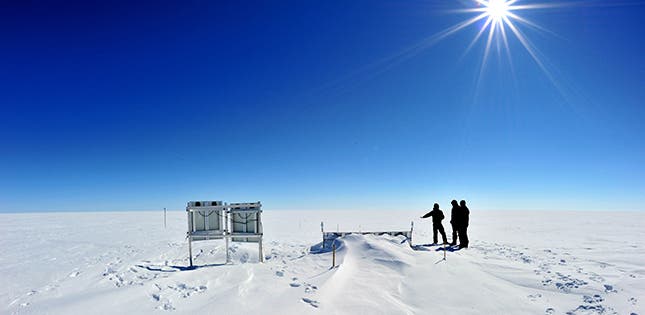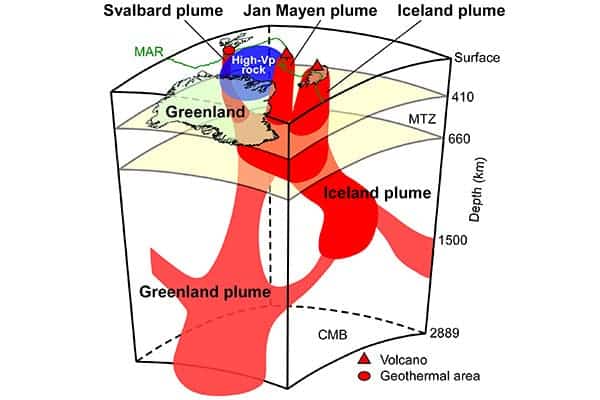
The North Atlantic region is awash with geothermal activity. Just think of Iceland’s volcanoes and hot springs, and you get a fairly good idea of what’s going on in some of these areas. It’s not just Iceland, either. Svalbard, a Norwegian archipelago in the Arctic, is another area with rich geothermal activity.
But we don’t know all that much about what’s causing this geothermal activity. Geologists are well aware that it’s a magma plume, but not much is known about the size and spread of this plume.
Now, in a new study, researchers have used seismic data to carry out a seismic tomography and analyze the area in unprecedented detail.

It’s not an easy task. To conduct seismic tomography, you need measuring stations at various points which, in the Arctic, is quite the challenge. Researchers installed seismographs on the Greenland Ice Sheet in 2009, fitting them with solar panels to provide energy. The Greenland Ice Sheet Monitoring Network, a real-time array of 33 stations that monitors Greenland’s earthquakes and icequakes in real-time.
To generate the tomographic scan, you need numerous seismic waves. Researchers then calculate how long the fastest waves (called the P waves) take to reach the station and then calculate their speed. Seismic waves travel at a different speed through different materials — such as a plume, for instance. So you can map an area where waves travel at a plume-like speed and make the reasonable assumption that it is a plume. It’s kind of like how a CT scan works in the body.
In the end, it proved to be worth it. They were able to define such an area, finding that it rises from the core-mantle boundary, spreading to two branches that supply geothermal heat to Iceland and Svalbard.
In addition to helping geologists shed new light on one of the more mysterious parts of the Earth’s crust, this study could also help researchers understand how the volcanoes in the Arctic will be affected by processes such as ice melting and sea-level rise.
“Knowledge about the Greenland plume will bolster our understanding of volcanic activities in these regions and the problematic issue of global sea-level rising caused by the melting of the Greenland ice sheet,” said Dr. Genti Toyokuni, co-author of the studies.
Moving on Toyokuni wants to explore the thermal process in even more detail. “This study revealed the larger picture, so examining the plumes at a more localized level will reveal more information.”
Journal Reference: DOI: 10.1029/2020JB019837 / DOI: 10.1029/2020JB019839









